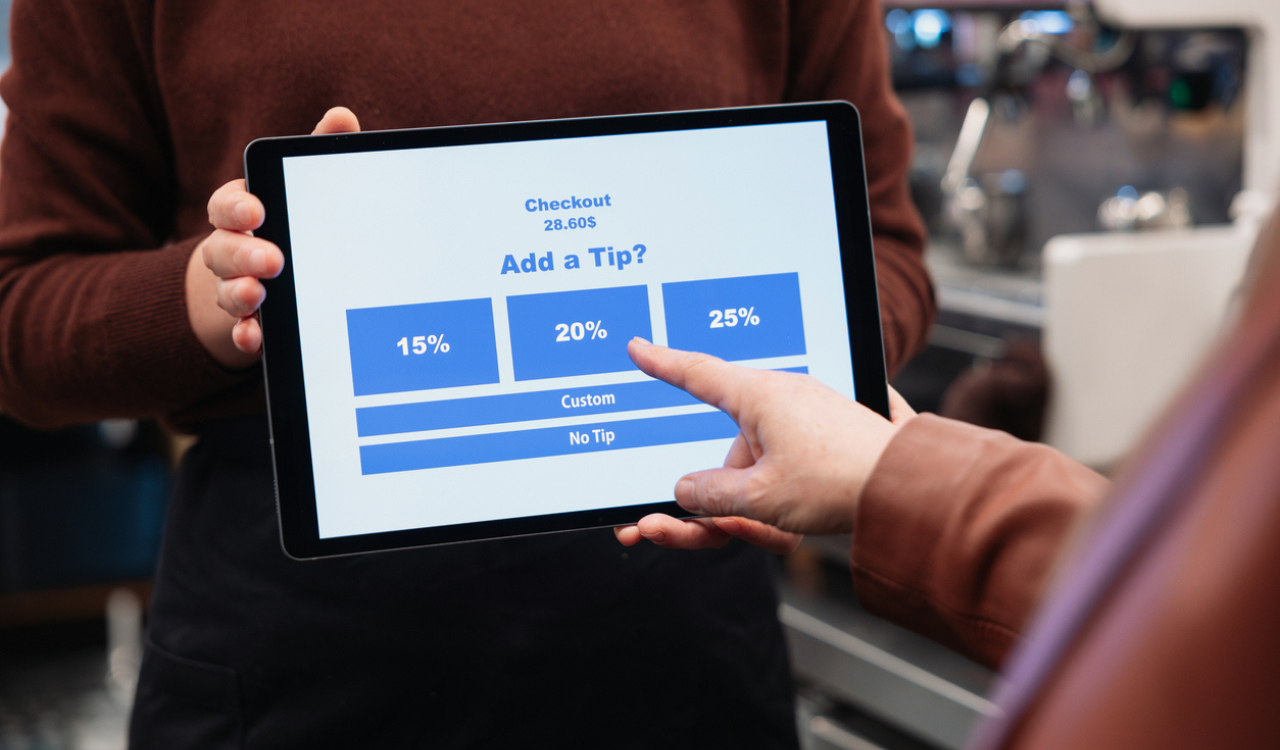The Japanese retail experience is world-famous for many, often contradictory, reasons. Many of the country’s retailers constantly revolutionize shopping convenience with robots and digital commerce technology, while others maintain timeless traditions such as immaculate hand-crafted packaging and deeply personalized customer experience based on the philosophy of omotenashi. Yet, as Japan’s economy continues to stagnate and its population shrinks by half a million people each year, one thing its retail sectors are not famous for is high growth. Unless that sector is luxury.
There is growing Japanese discontent with teeming numbers of inbound tourism. Anti-tourism sentiment has spread through popular travel destinations this year, such as in Barcelona, where months of anti-tourist graffiti and protests culminated in July street marches and thousands of local residents wielded mean-spirited placards and shot squirt guns at café diners and museum-goers.
Stratified Sales
Prada’s sales growth in Japan, for instance, has outstripped every other region globally for two years in a row. The Italian luxury house saw its Japanese revenue grow 55 percent in the first half of 2024 to 309 million euros, and it now accounts for 13 percent of its global business. LVMH saw its global revenue decline by one percent in the first half of 2024 (and profits by 14 percent), but has continued to single out double-digit revenue growth in Japan as a success story.
Many other luxury brands have enjoyed high growth in Japan this year, as tourists (largely from China and other Asian destinations) flock to the country and spend. The depressed value of the Japanese yen has turned a favorite holiday destination into one of the world’s cheapest sources for handbags and couture.
A recent chain of events, however, threatens the underpinnings of this mini-boom. On the first of August, gloomy U.S. economic news spooked Japan’s stock market, leading to a massive sell-off on a scale not seen since “Black Monday” of October 1987. The Tokyo Stock Exchange has since partially recovered, as has the yen’s value. This is added to a small (but rare) interest rate hike, a slightly more positive domestic consumer outlook, and a hardening attitude against free-spending tourists in Japan. This has created a creeping realization that luxury brands will not be able to drive sales through price arbitrage indefinitely and threatens to close a loophole that has shed some light on an otherwise dark luxury market outlook.
Carry On, My Wayward Yen
The yen has been tumbling against the U.S. dollar for over two years and hit a record low of 160 to the dollar in early July. This decades-low weakness is largely down to the interest rate differential which has steadily widened between the U.S. (which raised rates repeatedly to tamp down post-pandemic inflation) and Japan, which has been far too afraid of its stagnating economy to act similarly. The aggressive U.S. stance against China and the resulting trade war which has been unraveling global supply chains and throwing Asian markets into a confused and uneven post-pandemic recovery is another culprit.
The interest rate differential also revived a venerable international finance practice: the “carry trade,” where firms borrow in low-interest Japan and use the funds to invest in higher-yield projects and products. The yen’s years-long fall has created a virtuous cycle, as the returns from investing in higher-yielding currencies increase as the value of the yen-based loans fall. All of which has little to do with Japan’s retail economy directly, but it has increased its exposure to global volatility, as was the case earlier this month when fears of a U.S. recession convinced carry traders and investors that the good times were over, prompting them to dump their Japanese positions. The sell-off came days after the Bank of Japan raised rates a marginal 0.25 percent, finally ending nearly two decades of negative interest rates. The combination of these events has solidly strengthened Japan’s currency, edging it into what many economists consider fair value territory.
This is probably better for Japan and its consumers in the long run. A weak yen was supposed to help jolt Japan back to growth, and it did, in part. Cheaper Japanese exports (including, counterintuitively, tourism receipts) have soared, although sluggish demand from China and the West has meant Japan has not gotten as big a bump as a super-cheap yen should have provided. And while shoppers from overseas still benefit from a weak yen, it has also allowed imported inflation to leak into Japan.
This means domestic consumers increasingly are feeling pinched. The country’s Consumer Price Index (CPI), which has languished in a deflationary spiral since the late 1980s, has been steadily climbing since 2022, though not as sharply as it has in the U.S. and Europe. “Most imported goods and components have already been repriced, and Japanese wages and earnings growth have not kept pace, which has further weakened domestic consumer demand,” observes one regional macro-economist.
In principle, luxury shoppers are more immune to inflationary pressure, but high-end brands have taken no chances. “The Japan situation is an exception the brands cannot fix,” one Asia-based luxury executive explains, adding that the currency drop has been so great they fear that price equalization “would trigger the loss of too many local clients.” This has made high fashion and accessories a unique category of imports that have not raised their prices in yen.
Slowing the Tourism Roll
The yen’s slightly revived strength is only one of several rising headwinds facing Japan’s luxury sales. Another is growing Japanese discontent with teeming numbers of inbound tourism. Anti-tourism sentiment has spread through popular travel destinations this year, such as in Barcelona, where months of anti-tourist graffiti and protests culminated in July street marches where thousands of local residents wielded mean-spirited placards and shot squirt guns at café diners and museum-goers. Japan’s discontent is not as linked to tourism’s impact on rising housing prices as it is in Europe, but it is fuelled by similar concerns: Cultural heritage and quality of life are being eroded by the more than three million foreign visitors Japan has received each month since March.
Japan’s responses have been, unsurprisingly, less confrontational than Spain’s, and more focused on enforcing civil behavior. They have included restricting tourist access in certain neighborhoods in Kyoto, crowd control at Mount Fuji and a ban on motorized, rideable suitcases, popular with Asian retail tourists but loathed by Japanese pedestrians. These e-wheelies enable bargain-hunting tourists to zip around Japanese streets, stashing their purchases as they go. They are a physical manifestation of everything that makes Japan ambivalent about their surging tourism economy, which last year generated nearly $36 billion in spending, 10 percent more than in 2019.
This ambivalence will likely persist, and nudge municipal governments and businesses to introduce more measures, such as dual pricing and politeness campaigns, aimed at slowing the roll of tourists from China and elsewhere. This will also dampen their enthusiasm for luxury shopping sprees—especially if they have to haul it home themselves in non-motorized bags.
Equalization
The luxury arbitrage opportunity that shoppers visiting Japan have enjoyed for nearly two years has been artificially maintained by the brand owners themselves. For some years luxury retailers have been actively enforcing global price equalization, to close loopholes and cut back on “provenance shopping” which has put pressure on flagship stores. However local brand managers have felt unable to raise their Japan prices in yen terms because of the currency’s sharp decline and concerns that even high-income domestic consumers have turned sour on spending.
Japan’s swiftly-tilting economic circumstances, however, are starting to force their hand. The Ministry of Health, Labor and Welfare recorded a significant June jump in employee earnings in June, and economists now believe there is a good chance that real wages are on a growth trend, particularly now that a slightly healthier yen will reduce import inflation. As domestic consumers slowly find some confidence, and as the yen returns to a slightly fairer value, luxury retailers now have some wiggle room to let their local prices rise.
Indeed, there are signs that this is already happening, which will further slow tourist-derived sales. Japan’s luxury boomlet was largely due to a happy coincidence of visitors who found their money went further once they arrived in Japan. Japan’s luxury shops were not (at least initially) a destination in and of themselves, and as their prices return to global parity, they will become less so.
The more profound question for global luxury is where the growth story will come from once the Japan loophole is closed. While Asian shoppers from elsewhere pushed up sales at Prada and DFS, again they were seizing arbitrage opportunities much like carry trade borrowers. Chinese consumers have largely lost their luxury appetite this year (a result of a depressed property market) and other Asian luxury customers do not yet have the numbers to make up the difference. Japan’s domestic retail economy might be becoming healthier, but it will fade back into a market known for excellent service and convenience, but not growth.





